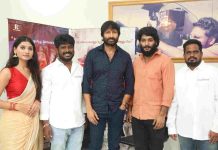 Y.Sunita ChowdharyThe
Y.Sunita ChowdharyThe
profession has undergone a transformation in recent years. Production houses don’t include movie promotional styling on the eve of the releases and the celebs are left with free collaborations with stylists who source designer wear for interviews and events. All they are promised is credits on the social media posts by the artistes. Things are slowly changing, corporates like Netflix, Sony, who are into film making and web series on OTT platforms are reportedly providing funds for promotions and are paying stylists and make-up artistes and hair dressers for movie promotions. The movie stars ask for designer dresses which the stylist has to source, get it dry cleaned, couriered or sometimes, tailored too. Obviously one can’t pay from their pockets for each look. It is a pressure on a stylist to stay within the budget, be candid with the client about what they can accomplish for the rates they charge. The Telugu film industry is flooded with many talented, young stylists who are looking for opportunities. Some have got enough experience and are on the threshold of coming up with their own boutiques. Klapboardpost.com talks to Neelima Vemani and her stint with the celebs and their fashion choices.
Vemani’s first fashion memory was when she was around three years old when she got draped in a saree. Later she would wear it on without help and mimic her teacher. She was six years old at that time. Later on, her parents didn’t agree with her decision to go to Delhi to study fashion. She completed B.Tech in computer science and didn’t quite like being a software engineer and got into fashion designing. She says, “I went to Canada and couldn’t adjust to the weather there and came back. My brother is in the film industry and encouraged me to take up work here so I assisted Ashwin in styling for three years. Later we did independent handling of projects and personal styling of heroines. I style girls with whom I share a good rapport like Hebah Patel, Esha Rebba and Nivetha Pethuraj. We pick clothes according to their body type and requirement and go for colours that gel with their personality. Right now we are styling but very soon, I and a few friends are planning to launch a store that will have our labels and that of a few designers. All the unique designs will be under one umbrella.”
Ask her the fun part of our job and she quickly responds, “Shopping. We shop regularly and never get bored of it and there is nothing like what next. We know where to pick up a certain thing and we know the latest stores and locations too, to source from. We can tell where a person has brought an outfit by seeing the print and cut. Every street has ten designers. The designer costumes are very expensive and seldom do producers agree to loosen their purse strings for it. We use designers only for promotions and events and each of them is known for a particular type of costume, traditional or modern. The designers don’t allow their outfits to be used for film shoots, there is a high risk of damage to the costume.”
Which costume is outdated and what is trending right now? “A ghagra, lehenga or a saree has become a must for weddings. Designs and patterns are being changed and old traditions are being brought back. Just the colour, cut and pattern is changed. Silk sarees have been used as flowing gowns, kurtas or kurtis. We can’t buy an outfit and wear the same for another function. To carry a style isn’t easy and doesn’t often fall in place, it should suit people. On the other hand, the same saree many times and can be worn with a sleeveless blouse or something else and the entire look changes. Now silk lehengas have become expensive, the season has changed too. It has become expensive and it costs nearly forty to sixty thousand and now they are trying to fit it into their budget. Sarees are trending now. If we give two outfits, they pick sarees. The saree can play any role and we can give it a western, indo-western or a traditional touch. There is no chance of a saree fading. If you can’t think of anything, go for a saree though teenagers say no to sarees.”
Why are anchors badly dressed? “We have never styled television artists or anchors. Anasuya is my choice if I am asked to pick someone from television. Some people are hesitant to try indo western and they are apprehensive of trying new. Basically problems arise because of a stylist. In a film too, a stylist has to follow a director and a cinematographer’s instructions. Colour and style and fitting comprises won’t be there but in promotional events, a stylist can show her expertise and knows what the artiste can carry well. They also know certain looks that photograph well, a western looks get projected well. However I think girls should experiment with everything.” What is the most challenging part of the stylist’s job? “Impressing a director and next cinematographers. Just get what they want and they feel good on an artiste.”
Neelima states that most artists want others to wear both onscreen and for events too. Everyone likes to look good on screen but producers cite budget constraints. “We can’t be direct. For personal styling artists don’t like spending from their pockets. They also have become conscious while they step out. The stylist recommended airport and paparazzi looks.” Neelima is amused, “They wear brands. The stylists, managers or someone from the artiste’s team informs the photographer that they are arriving at a certain time.” The most important thing you learnt while being a stylist? “To just shut up. Whenever I am in a project, I talk less. When we talk freely, we are in close proximity with the star circle, there is scope for gossiping and that is what I like to best avoid.”













